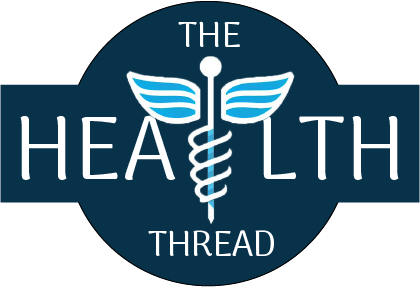Navigating the Challenges of Infertility: Causes, Treatments, and preventative Strategies

Written By THT Editorial Team

Reviewed by Dr. Asmita Pandey, Fertility Expert , M.D. (OB/GYN)
Infertility is a significant concern affecting 1 in 6 couples globally (WHO 2023), with various causes and treatment options available to address this issue. When exploring infertility, it is crucial to understand the common causes, treatment options, and preventative measures associated with the condition.
Causes of Infertility in Men and Women
Infertility can arise from a multitude of factors in both men and women. In men, common causes include low sperm count, poor sperm motility, hormonal imbalances, genetic factors like Klinefelter syndrome, mumps infection affecting sperm production, and lifestyle factors such as smoking, drug use, exposure to chemicals, stress and obesity[2][3][4]. On the other hand, in women, causes of infertility may stem from ovulation disorders, , tubal blockages, various uterine factors like endometriosis, fibroid, cervical factor, post-surgery scarring, and age-related decline in egg quality and quantity[1][2][4].
Treatment Options for Infertility
Treatment for infertility varies depending on the underlying cause. For men, treatment options may include lifestyle changes like avoiding drugs and alcohol, hormone therapy to regulate hormone levels affecting sperm quality, surgical interventions to correct anatomical issues or blockages, and assisted reproductive technologies (ART) procedures [3][4]. In women, treatments can range from medications to induce ovulation, timed intercourse or improve egg quality to surgical procedures to address structural abnormalities [1][2][4].
Preventative Measures for Infertility
Preventing infertility involves adopting healthy lifestyle practices. Both men and women can benefit from avoiding smoking and excessive alcohol consumption, maintaining a healthy weight through diet and exercise, reducing exposure to environmental toxins or chemicals that may impact fertility, and seeking timely treatment for sexually transmitted infections (STIs)[4][5]. Additionally, regular testing for STIs and addressing any underlying health conditions promptly can help prevent infertility. Moreover, with recent advances, egg or embryo freezing is an option for career-oriented couples wanting to delay pregnancy.
The emotional and social aspect of Infertility:
The journey through infertility can be emotionally taxing and socially isolating. Couples may experience a rollercoaster of hope and disappointment with each treatment cycle. The societal pressure to have children can exacerbate feelings of failure or inadequacy. It’s essential to recognize the emotional toll and provide support through counseling services, support groups, and open communication with loved ones [6].
*Technological innovations in infertility treatments:*
The field of reproductive medicine is continually evolving, with new technologies enhancing the success rates of fertility treatments. Techniques like ovarian tissue freezing and sperm DNA fragmentation tests are on the forefront of these advancements. These innovations offer new hope for couples who have had limited success with traditional fertility treatments [7].
*Nutritional Influences on Infertility *
Recent studies suggest that nutrition plays a vital role in fertility. Diets rich in certain nutrients, such as omega-3 fatty acids, iron, vitamin D and other micronutrients have been linked to improved fertility outcomes. Conversely, diets high in processed foods and sugar may negatively affect reproductive health. Nutrition counseling can be a valuable component of infertility treatment plans [8].
Global perspective on infertility
Infertility is a global issue, with varying prevalence rates and treatment accessibility around the world. In some cultures, infertility carries a significant stigma, which can impact the willingness to seek treatment. Understanding these cultural nuances is important for providing compassionate and appropriate care to individuals facing infertility [9].
In conclusion, infertility is a complex issue that affects both men and women due to various factors ranging from genetic conditions to lifestyle choices. Understanding the common causes of infertility and the available treatment options is essential for individuals facing fertility challenges. By incorporating preventative measures such as maintaining a healthy lifestyle and seeking timely medical care i.e. failing to conceive after one year of regular sexual intercourse, individuals can take proactive steps towards preserving their fertility and addressing infertility issues effectively.
* More information on recent breakthroughs on technological innovations :
The Semen Microbiome and Its Impact on Male Fertility
Recent Advances in Male Infertility Research
*More information on nutrition :
Nutrition and Healthy Eating During Pregnancy and Postpartum: A Guide for Expectant and New Mothers
REFERENCES
[1] Planned Parenthood. (2024). what is infertility? Retrieved March 24, 2024, from https://www.plannedparenthood.org/learn/pregnancy/infertility
[2] Brazier, Y. (2023, December 22). Infertility in males and females. Medical News Today. Medically reviewed by Kallen, A., MD. Retrieved from https://www.medicalnewstoday.com/articles/165748
[3] Cleveland Clinic. (2024). Male infertility. Retrieved from https://my.clevelandclinic.org/health/diseases/17201-male-infertility
[4] Mayo Clinic. (n.d.). Infertility. Retrieved from https://www.mayoclinic.org/diseases-conditions/infertility/symptoms-causes/syc-20354317
[5] ARC Fertility. (n.d.). Prevention of infertility. Retrieved from https://www.arcfertility.com/patient-resources/infertility-tutorial/prevention/
[6] American Psychological Association. (2024). The psychological impact of infertility. Retrieved from https://www.apa.org/topics/fertility/infertility-impact
[7] Human Fertilisation & Embryology Authority. (2024). Advances in fertility treatment. Retrieved from https://www.hfea.gov.uk/treatments/explore-all-treatments/advances-in-fertility-treatment/
[8] The Nutrition Society. (2023). Nutrition and fertility. Retrieved from https://www.nutritionsociety.org/papers/nutrition-and-fertility
[9] World Health Organization. (2024). Infertility: A global public health issue. Retrieved from https://www.who.int/reproductivehealth/topics/infertility/perspective/en/





